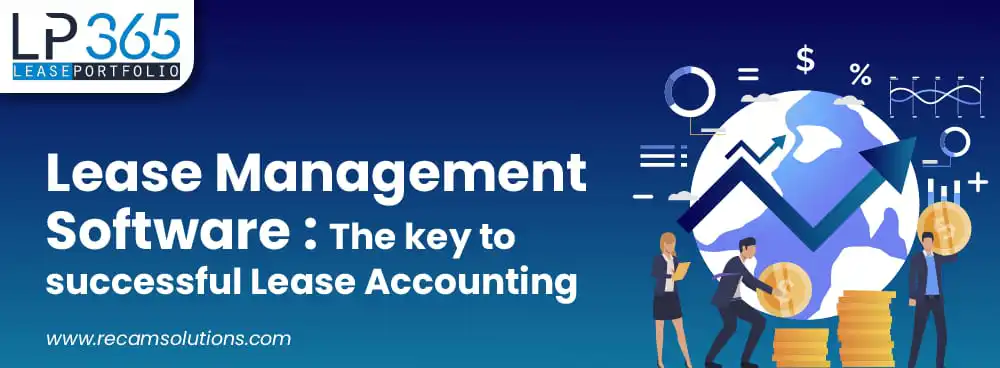Book a Free Demo

13 Dec 2022

An organization's real estate department generally handles Lease Management. Lease administration entails receiving rent from assets owned by the company and paying rent for amenities Leased by the company, among other things. It has become an essential component of the accounting, organizational, and administrative obligations that generally accompany a real estate portfolio. After a Lease is signed, Lease administrators manage and analyze rental payments, organize tenant changes, and handle modifications as needed. Lease management can be done either internally or by an external vendor depending on the size of an organization’s portfolio.
Lease agreements, accounting, and administration were formerly handled manually, with little to no coordination between the teams in charge of each function. Due to a lack of audit tools and integrated records, data was spread, Leasing decisions were irregular, and Lease expenses were frequently overpaid.
The first step in successfully managing and administrating Leases is to collect all Lease data in a centralized repository, which provides a single source of information as well as an audit trail for all Lease revisions and agreements. Choosing a software application like Lease Portfolio 365 would allow the company to centralize all data related to Leasing contracts, enabling effective Lease management. It will also include solutions for automating budgeting and Leasing administration.
With technology and centralized Lease Management systems in place, a firm can now evaluate Lease data to determine which Leases are performing as expected and which are costing the organization more money than expected. This data can help the company decide how to standardize Lease decisions. Collaboration with Lease administrators, negotiators, and accountants to identify current strategies and assure the application of cost-effective Leasing standards is the optimum practice for a financial management system.
It is critical to set standard processes for each company involved in the acquisition and maintenance of Leases in order to ensure that an organization's accounting staff always has reliable Lease information to feed accounting statements and balance sheets. This includes new Lease processing, Lease termination management, and Lease amendment documentation. When Leases change, an organization's Lease accounting must be adjusted. Choosing software that automates Lease re-measurement and revision, such as Lease Portfolio 365, is a smart way to reduce the accounting team's effort.
The addition of Leases to the balance sheet has increased the significance of financial reporting. As a result, tighter oversight is required to assure accounting precision. Additionally, validation and internal monitoring are required to ensure that all Lease Management procedures and regulations are followed.
When you Lease properties from other people or companies, each Lease will almost certainly have its own set of conditions and renewal time. Without a Lease Management system, it's tough to keep track of all those different dates and agreements, whether you're Leasing a couple of buildings or your portfolio contains a plethora of properties. Each Lease reaches a termination period with a fresh set of considerations: To ensure that nothing falls through the cracks, you must keep track of all your rights and duties under each of your Leases.
Lease Portfolio 365 software can help you make the finest data-driven Lease renewal decisions, as well as maintain proper Lease documents and a record of any Lease revisions, as well as notify you of any deadlines or demands that must be addressed. You can use it to study and compare several alternatives, assisting you in deciding the best course of action for your company.
Some of the most important ways that Leasing software applications can assist:
● Keeping track of each Lease period, calculating each transaction, and making changes if payments do not match the rental agreements
● Providing audit tools for detecting late and overpayments.
Lease Management software, such as Lease Portfolio 365, relieves you of a big risk by managing all of your Lease-related needs. Lease Portfolio 365 is cloud-based Lease Management software that helps businesses manage Lease payments, property-related documents, and other data and reports. To assist businesses, we manage their reports, integrate their data, and send Lease related reminders on time. We serve a variety of industries, including banks, pharmacies, supermarkets, and hypermarkets. Lease Portfolio 365 assists you in managing a company's many branches, preserving legal paperwork, reminding you when it is time to pay a Lease or extend an agreement, and providing you with other connected services.
If you are a person who desires to build a business empire then you must invest in the right software solution like Lease Portfolio 365.
To know more about Lease Portfolio 365 click here -
#LP365 #Lessee #Lessor #Rent #Payment #Lease #Cloud #Integration #Bestapplication #Bestsoftware #Valueformoney #Savior #Business #Property

For further information contact us through
+91 72001 46160
Looking for a Free Explainer videos? then please visit our website -